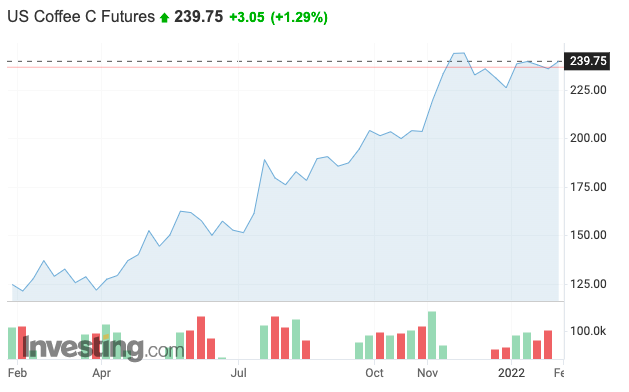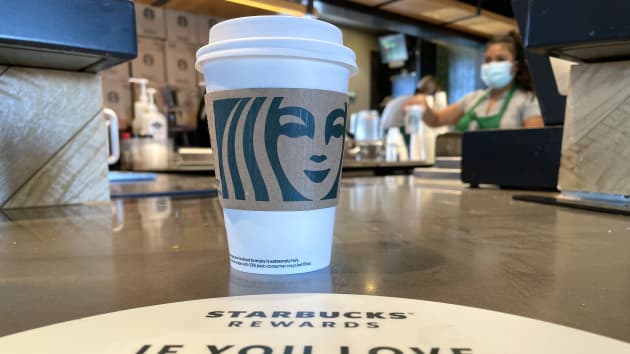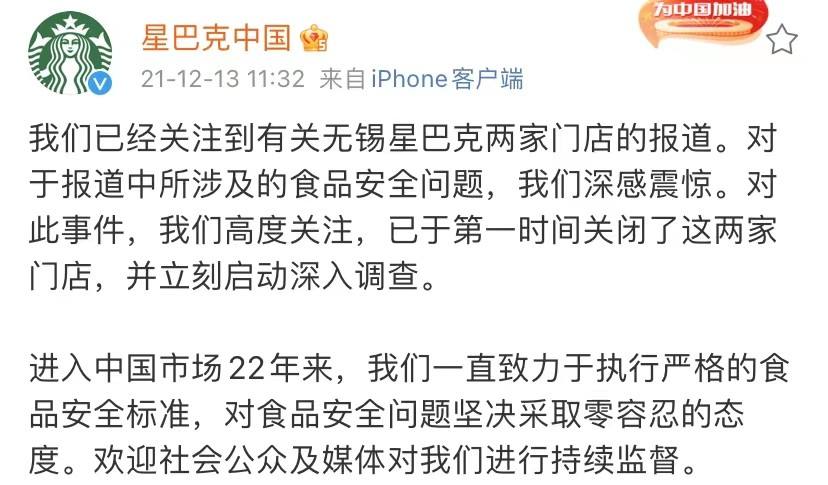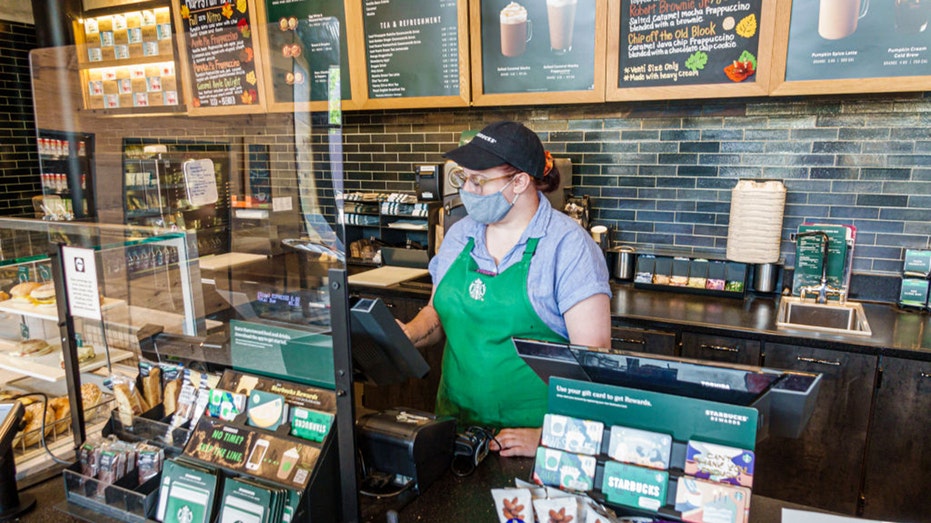Starbucks Coffee announced another price hike CEO: several price increases this year to cope with inflation and rising costs
Before the Spring Festival, I was still lamenting how miserable this Korean coffee enthusiast was. First, Starbucks in South Korea reported an increase in the price of American coffee, and then there was a further "dilemma" of South Korea's "plastic ban", causing domino effect in major coffee shops in South Korea to raise prices. They all said that the price of American coffee had risen, "obliterating" the American freedom of South Koreans.
While everyone is still thinking about "it's just that the price of coffee is rising in some areas," Starbucks CEO Kevin Johnson2 said publicly on March 2 that Starbucks has adjusted its pricing twice in the past four months. However, due to salary increases for front-line employees and rising other costs, Starbucks has to continue to raise prices in the coming months. For example, the price of the most basic coffee beans has increased significantly in the past year. In the past 52 weeks, the futures price of coffee beans has risen from 120.2 cents to 239.20 cents in recent days, which is Starbucks' basic raw materials and an important part of the cost. Fortunately, Starbucks did not mention whether the price increases included the Chinese market.

Simply put, Starbucks expects to raise prices several times in the coming months because of disruptions in the supply chain, rising labor and other costs, and inflation.
Tridge, an agricultural trade platform, said that even as coffee futures prices and retail prices rose, Asian consumers' demand for coffee did not decrease, but maintained a growing trend. In China, Starbucks' second-largest consumer market in the world, store sales fell 14% in the last quarter.

As COVID-19 's confirmed cases are on the rise again, domestic travel business has once again been hindered. Unlike in foreign countries, the infection of the Omicron strain in China was only reported in January. Foreign countries show a relatively negative attitude towards the recovery of COVID-19 epidemic in China, and it is believed that China's recovery from the new strain will be delayed.
The two Starbucks stores previously exposed by the media used expired raw materials, and then it was revealed that there were thousands of complaints against Starbucks on a consumer rights platform, but none of them were dealt with. The above incident has also been sent to Weibo by netizens, which has further worsened Chinese consumers' impression of the Starbucks coffee brand.


In addition, last year, Starbucks employees in the United States were eager to form trade unions for reasons such as low hourly wages, high work pressure and insufficient training, with a view to negotiating with Starbucks on an equal footing. Soon after, in November, Starbucks China announced 14 salaries, raising the salaries of its 40,000 employees. Staff benefits have increased, and so have Starbucks' wage costs. Due to the surge in confirmed cases of COVID-19 abroad and more employees calling in sick, many offline stores have no choice but to reduce business hours.

In addition, inflation has set a new record, and due to the outbreak of COVID-19, the cost of raw materials to packaging is rising due to the rising price of goods transportation. In the end, all these additional costs eroded profits, causing Starbucks to fail to achieve expected quarterly earnings. Starbucks also lowered its earnings forecast for fiscal year 2022 to 8% to 10% next year, down from at least 10% before.
To address the above-mentioned cost problems, Starbucks chose to raise prices for products on its menu while reducing some of its expenses, offsetting soaring labor and commodity costs and reducing the erosion of costs on profits.
China is now Starbucks' second largest market in the world, but it has given birth to more, better quality and lower prices. The selling point of Starbucks' Chinese stores is not the coffee product itself, but more about the consumer environment, new peripheral products and some relatively new concepts. Apart from these, do you think Starbucks' daily products can still get away with it?
Photo Source: Internet
For more information about coffee beans, please follow the coffee workshop (Wechat official account cafe_style) and exchange professional coffee knowledge. Please add Wechat account kaixinguoguo0925.
Important Notice :
前街咖啡 FrontStreet Coffee has moved to new addredd:
FrontStreet Coffee Address: 315,Donghua East Road,GuangZhou
Tel:020 38364473
- Prev

1000 yuan for a glass of olive juice?! The company involved was fined 500000 yuan!
In the catering consumer market, the pursuit of all kinds of rare ingredients has never stopped, first a thousand-year-old litchi tree, and then a thousand yuan olive juice. In November 2021, the cup of drinks worth thousands of yuan in the menu of Shenzhen milk tea shop went viral on Weibo because the price was too high; it was later revealed that thousands of yuan olives were purchased.
- Next

Luckin Coffee pays a fine of 1.2 billion! Lu Zhengyao influenced investors to raise money for Ruixing.
On February 4, Luckin Coffee filed with the Securities and Exchange Commission (SEC) that Luckin Coffee had met the conditions of the previous settlement agreement with SEC at the price of paying a fine of $187.5 million (about RMB 1.2 billion) in exchange for SEC not pursuing Luckin Coffee.
Related
- What effect does Italian American coffee with filter paper have? Will coffee taste better if it is put on filter paper at the bottom of the powder bowl?
- What is the color difference in coffee beans? What are the characteristics of honey processed coffee beans? Why are the anaerobically treated coffee beans uneven in color?
- How does novice Xiaobai quickly get started and make coffee? Newbies learn to make coffee by hand and share the specific steps and process process!
- Costa tea has a shelf life of 100 years?! Expert: Unable to verify
- It's a huge uproar! American milk addition was rejected by Manner employees?!
- Mocha pot coffee bean recommendations| How fine and how much powder should be used for grinding? What parameter ratios do I need to use to make milk with Mocha pot coffee?
- What are the characteristics of the world's top ten coffee beans treated with Costa Rica honey? How to make black honey kadura from Tarazhu Pilon Processing Plant taste good?
- How to make deep-roasted coffee? What grinding water temperature does authentic Jamaica Blue Mountain No. 1 coffee use to brew it well?
- Selected high-grade rose summer coffee flavor tasting guide Why Panama rose summer has the aroma of flowers and fruits
- What equipment does a novice Xiaobai need to buy to learn to make coffee? Filter cup electronic scale bean grinder manual flushing pot purchase guide

